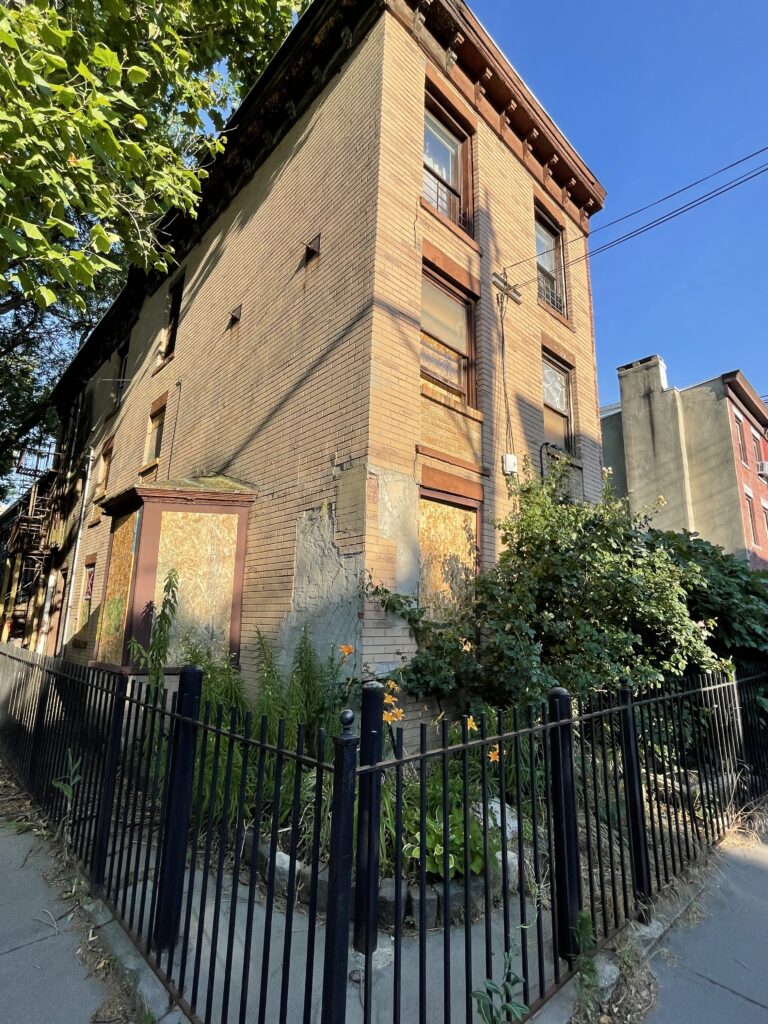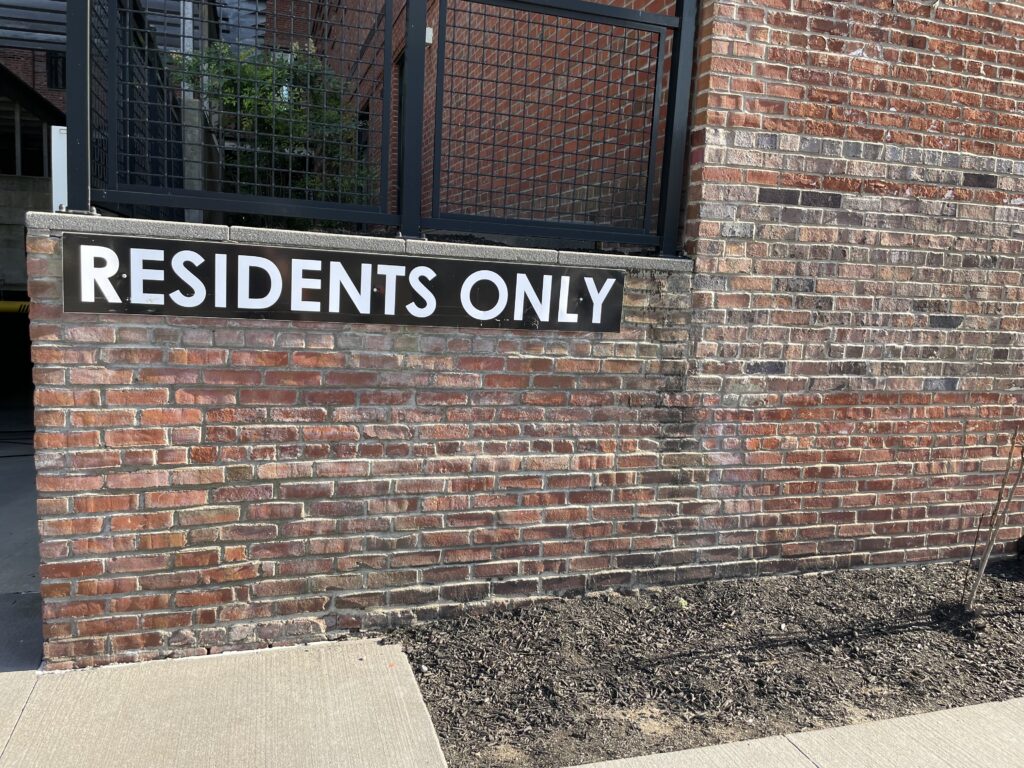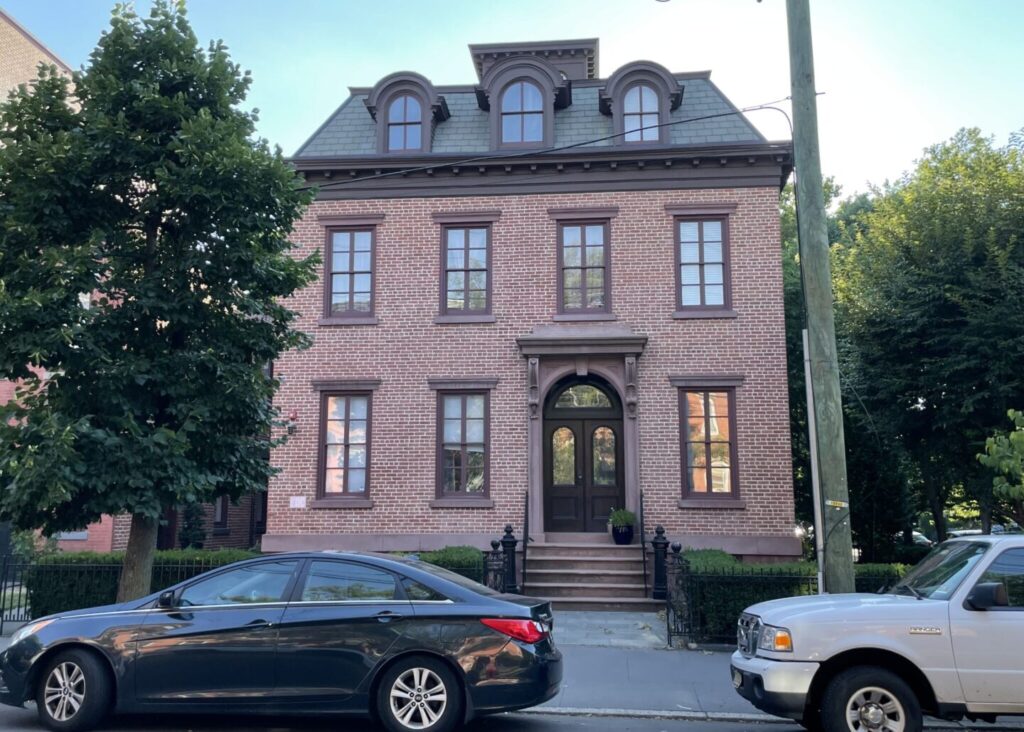
Longtime readers of Jersey Digs may remember our photojournalism series from a decade ago called Weekend Walks which chronicled our strolls through various Jersey City neighborhoods. To say Hudson County’s largest city has changed a bit since then is an understatement, as massive developments have altered the streetscape considerably.
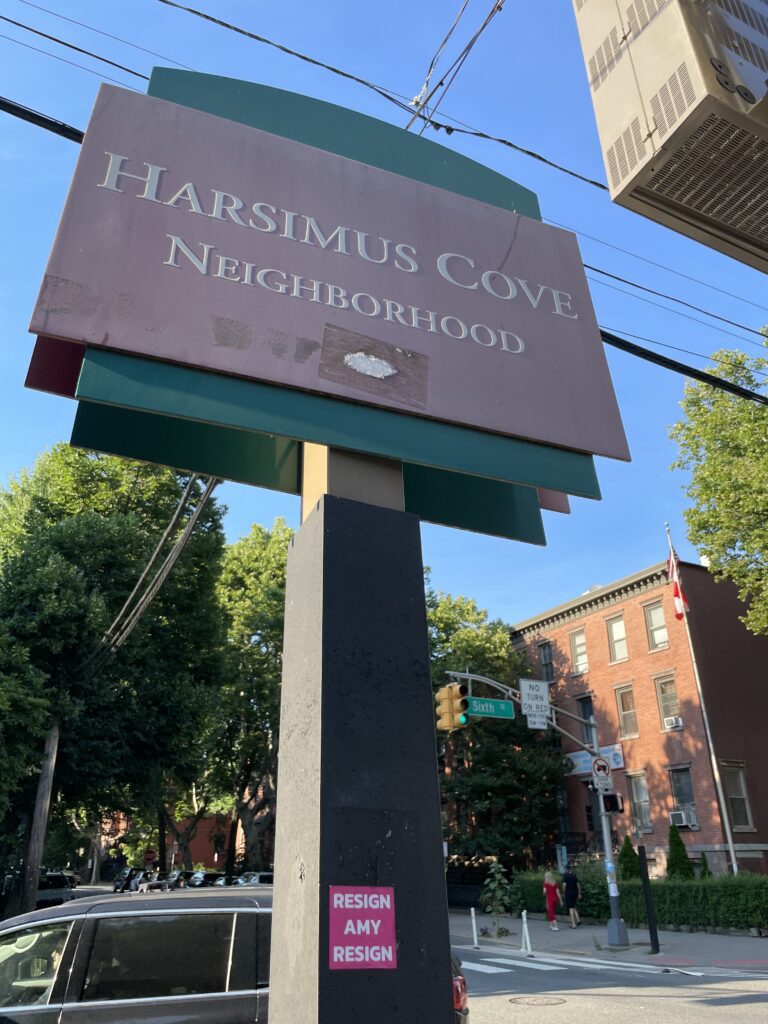
However, some neighborhoods have kept their aesthetic intact and gained more than a few renovation projects over that time. One of the spots that is sure to emerge as a flashpoint for historic preservation in the coming years is Harsimus Cove, a Downtown neighborhood that sports a little bit of everything.
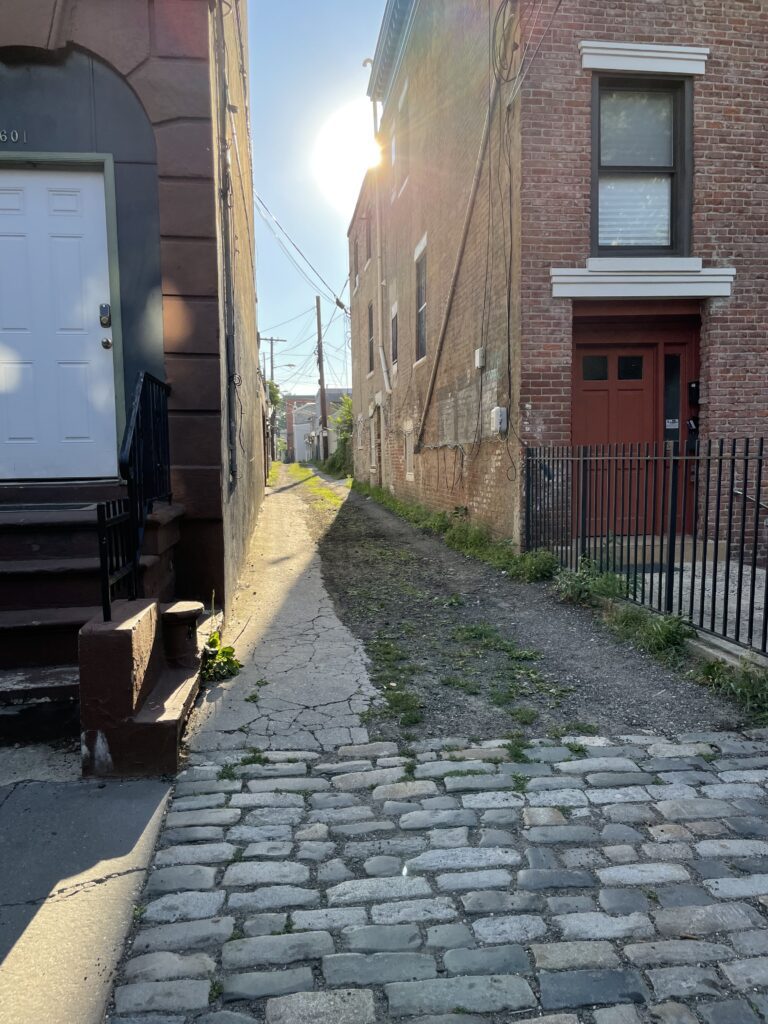
Stretching from 6th Street south to Columbus Drive, the community boasts a ton of history inside brownstones and row houses along with more than a few stunningly restored homes. One of the characteristics of Harsimus Cove that is unique to Jersey City are proper alleyways that are scattered around the area.

Commercial areas along Grove Street and Newark Avenue get tons of attention and Instagram posts, none of which loom larger than the pedestrian plaza. The stretch has seen both highs in drawing new restaurants and lows with vacancy rates in recent years, with another block of Barrow Street recently being shut to car traffic for a planned playground.
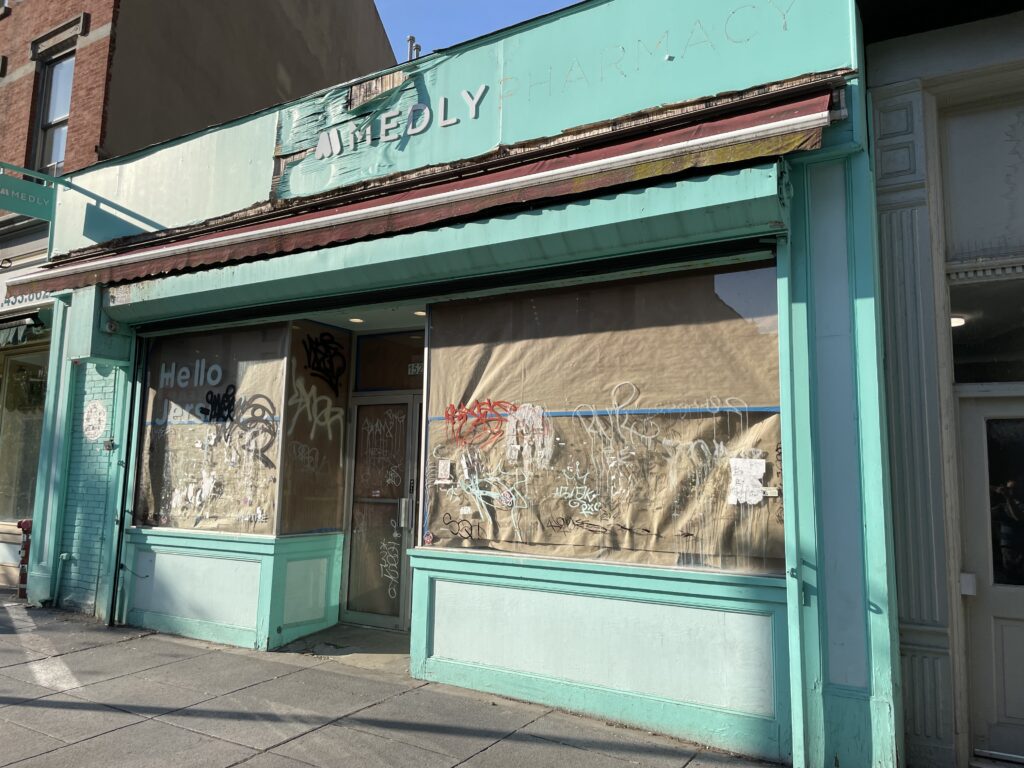
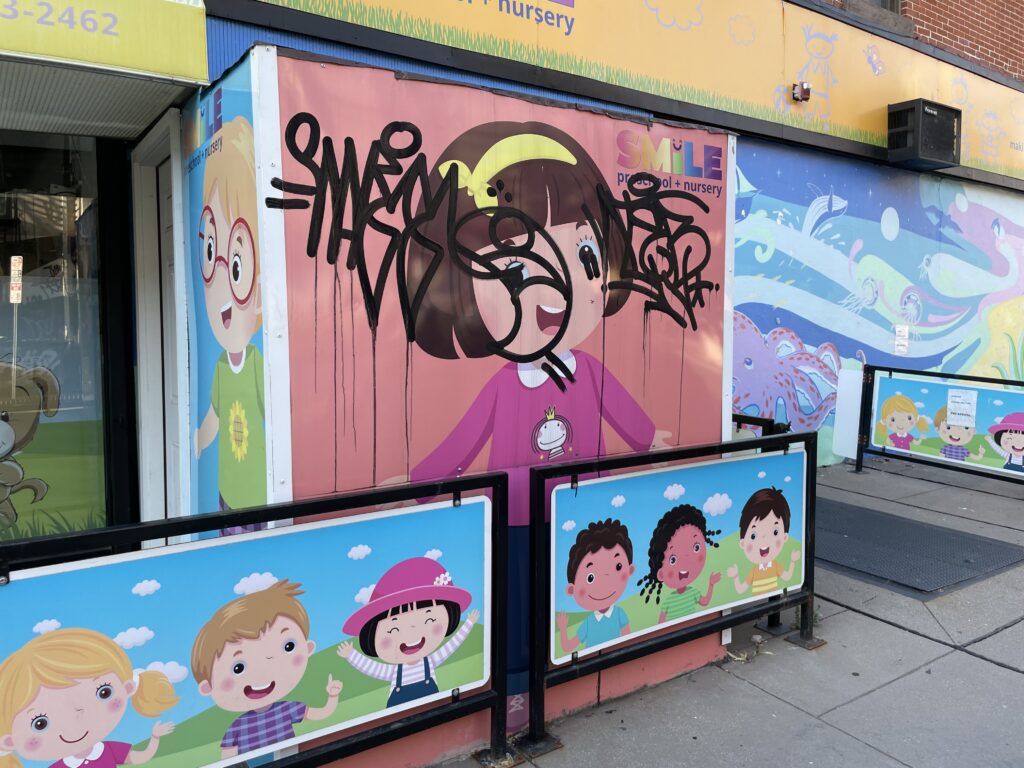
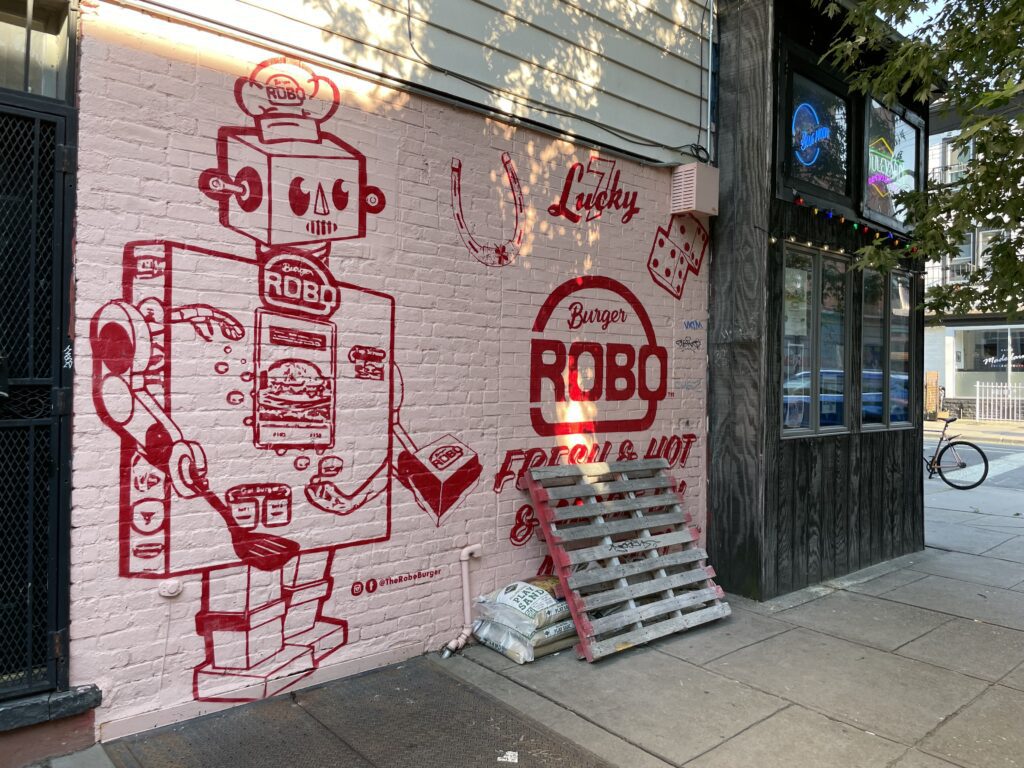
There are also more than a few cannabis businesses that have popped up in recent years following New Jersey’s 2020 recreational legalization vote. Cream Dispensary, FLWR, and Garden Greenz are all within steps of each other in Harsimus Cove, making it possibly Jersey City’s “greenest” neighborhood.
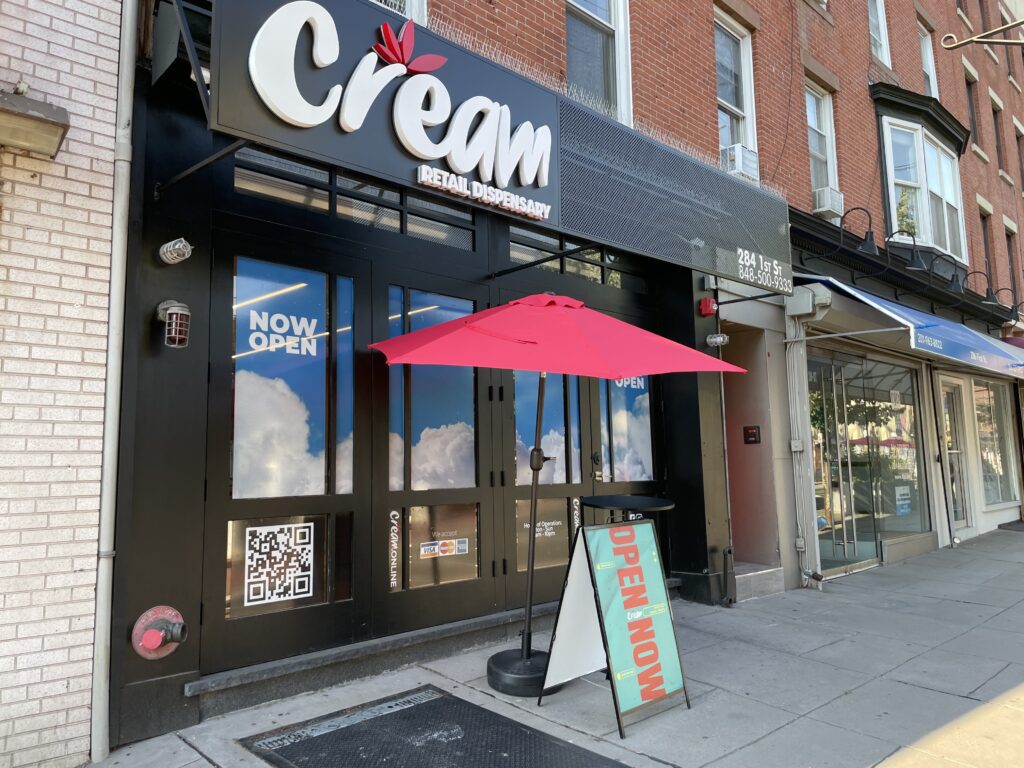
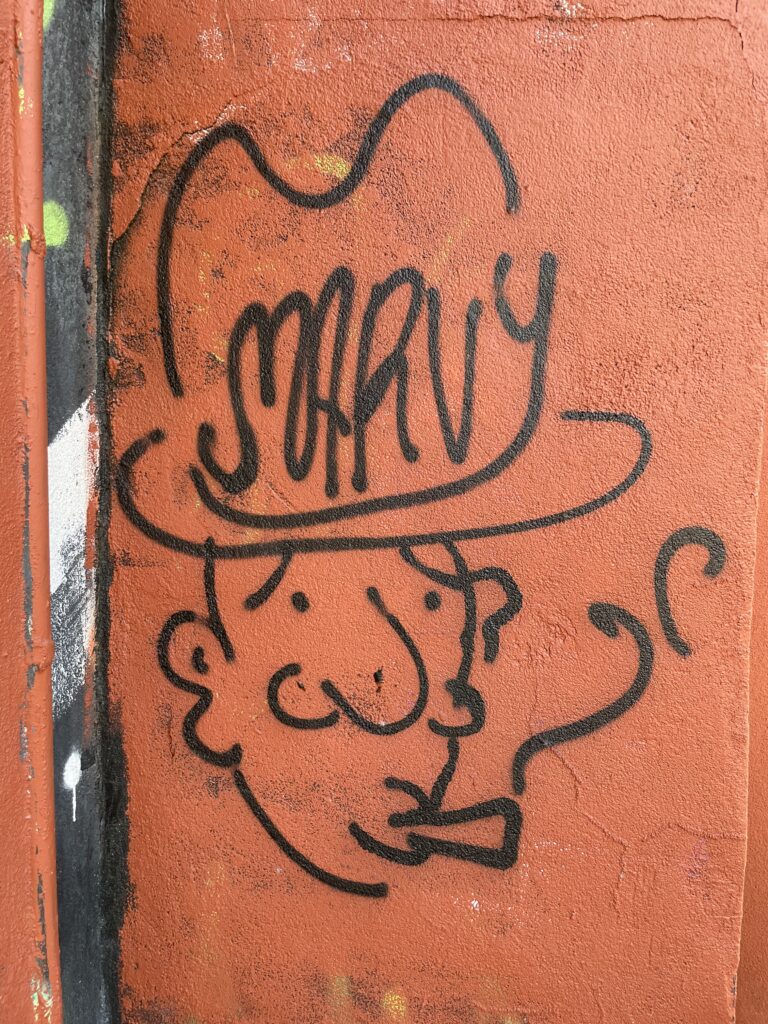
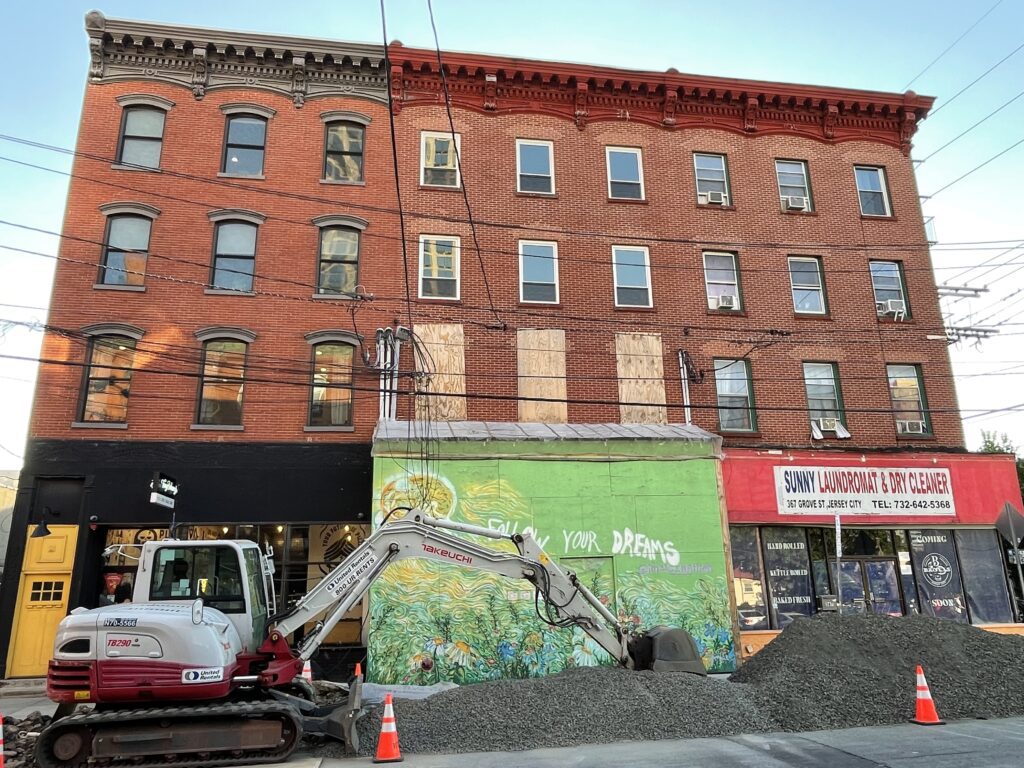
In terms of new developments, construction still has a regular presence in Harsimus Cove. Some projects that are underway will have unfortunate consequences like this one along First Street, which will eventually obstruct a mural when completed.
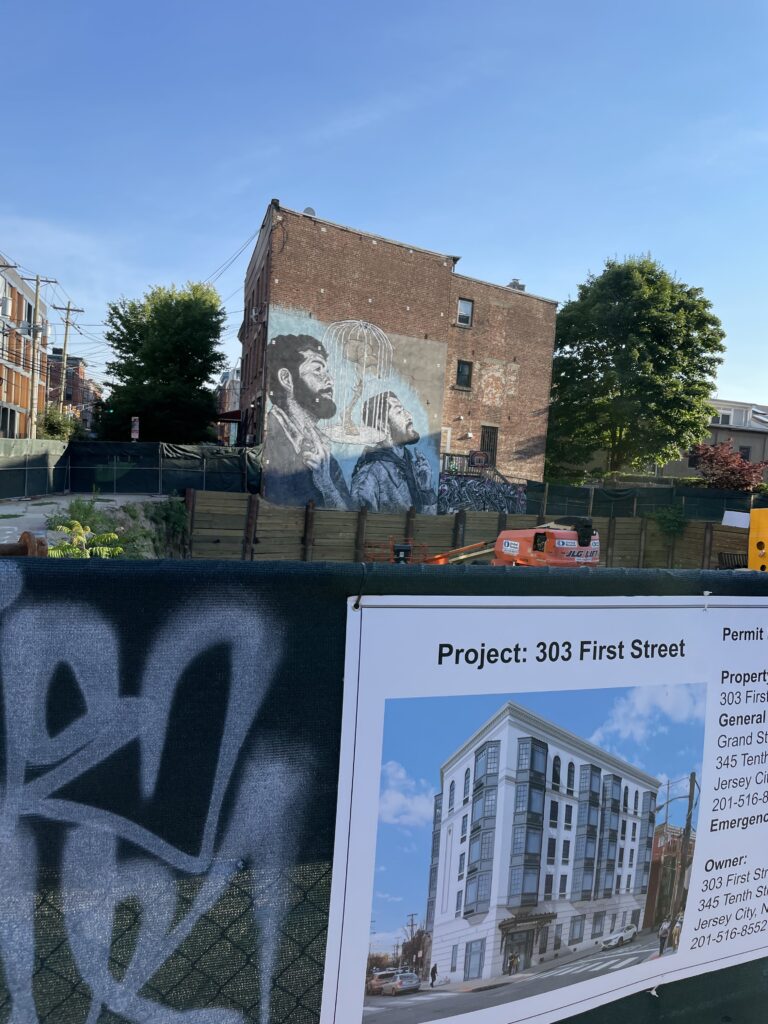
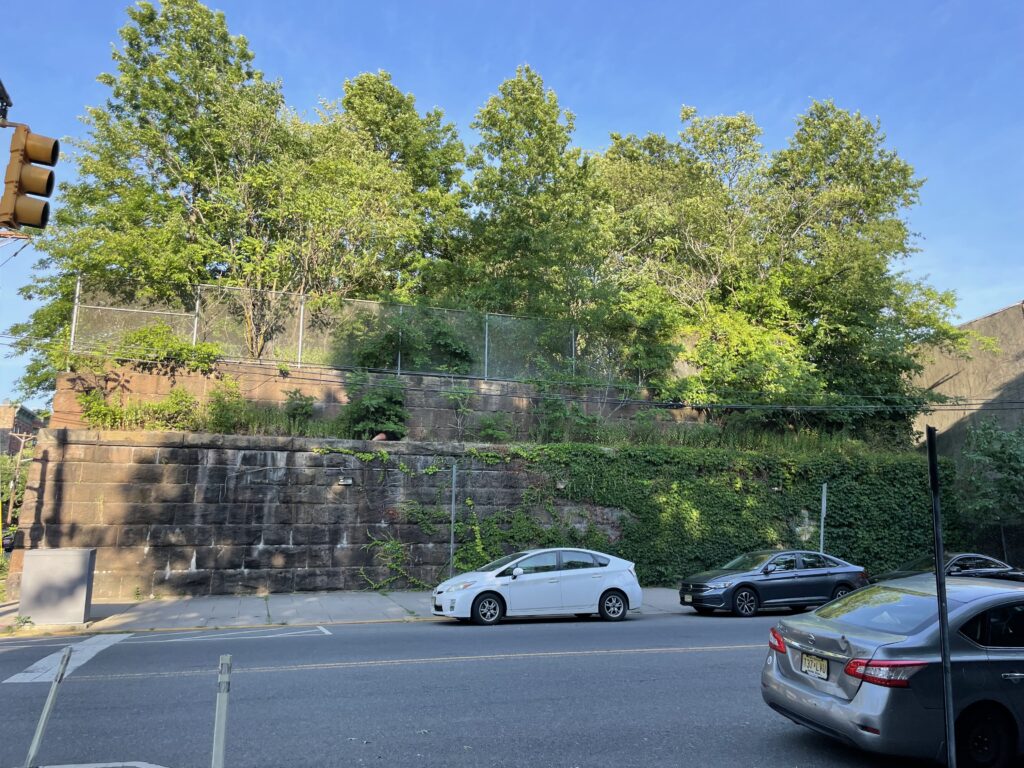
One of the biggest ongoing preservation battles in Harsimus Cove is over the 6th Street Embankment, a former elevated rail line that has sat abandoned for over two decades. Jersey City has been trying to open the space to the public via a park redevelopment plan for many years but has yet to see the effort pay off.
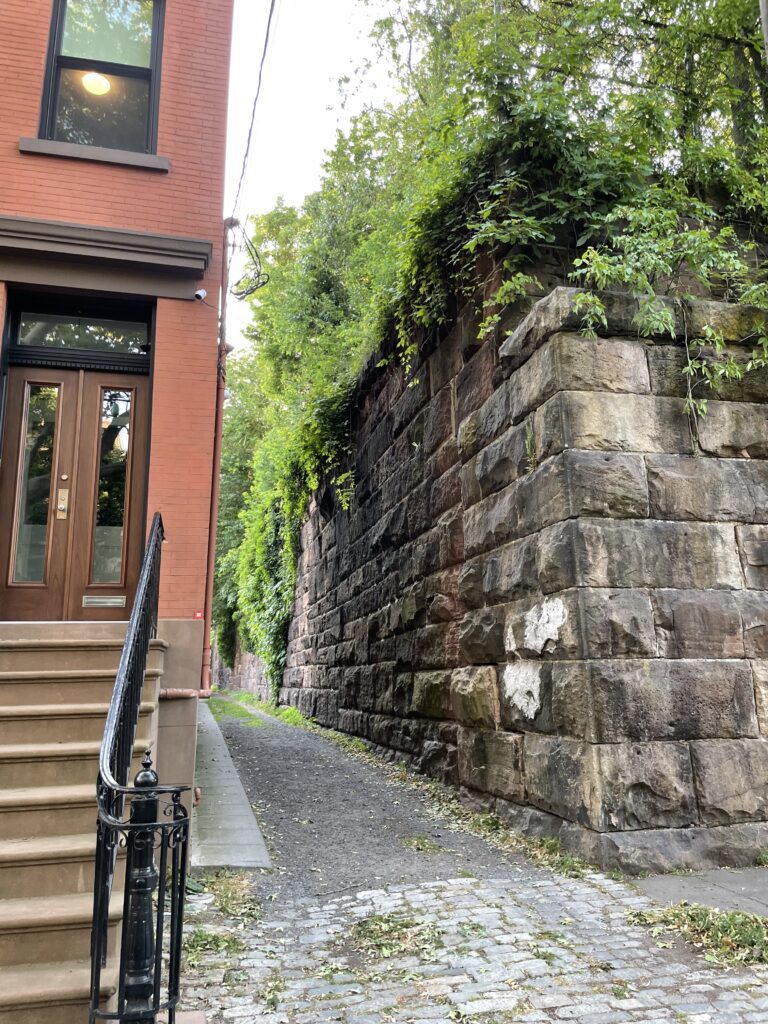
Another notable historic structure that towers over Jersey Avenue is the North Baptist Church, which dates to 1886. Plans for the property’s revitalization emerged over three years ago but boarded-up windows and scaffolding remain in place at the neglected structure.
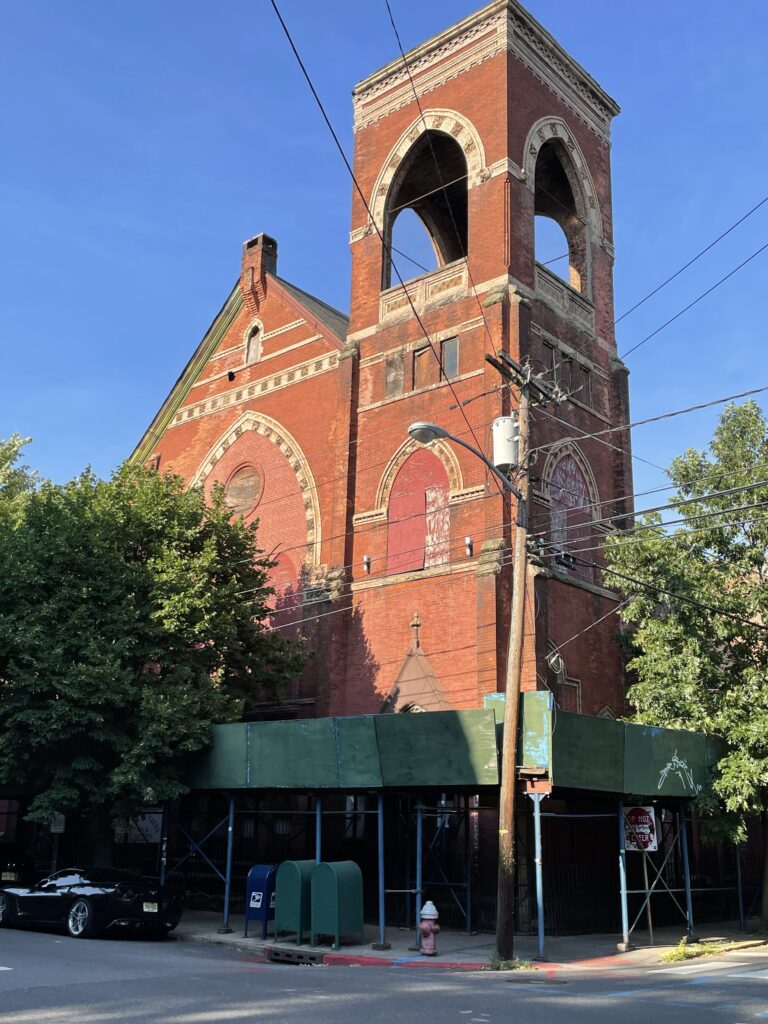
There have been a few notable successes in terms of large preservation projects in the neighborhood, particularly in the adjacent Powerhouse Arts District. 151 Bay has transformed the site of a former Manischewitz matzo factory and The Great Atlantic & Pacific Tea Company’s Annex property into a high-rise that includes a 550-seat community theater along a restored cobblestone street that is aiming to open later this year.
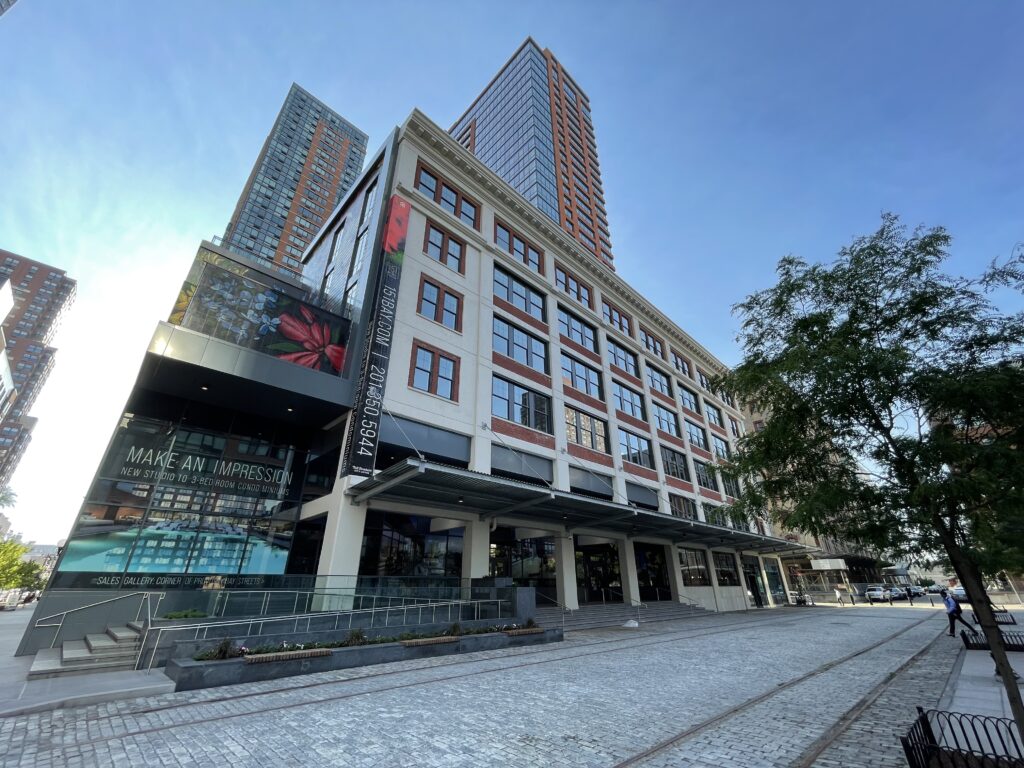
Just a few doors down, the upcoming Arts & Powerhouse Building is set to wrap construction in the coming months. The endeavor is expanding and connecting two former warehouses into a commercial hub with a slew of restaurants and businesses already signed on to occupy the building.
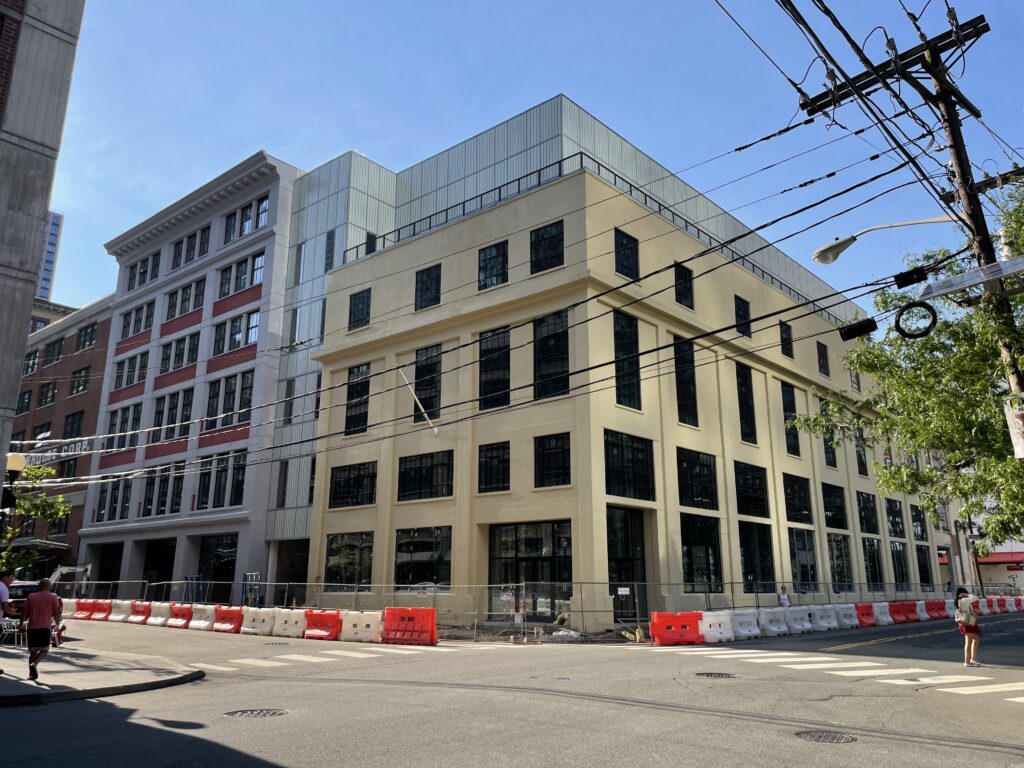
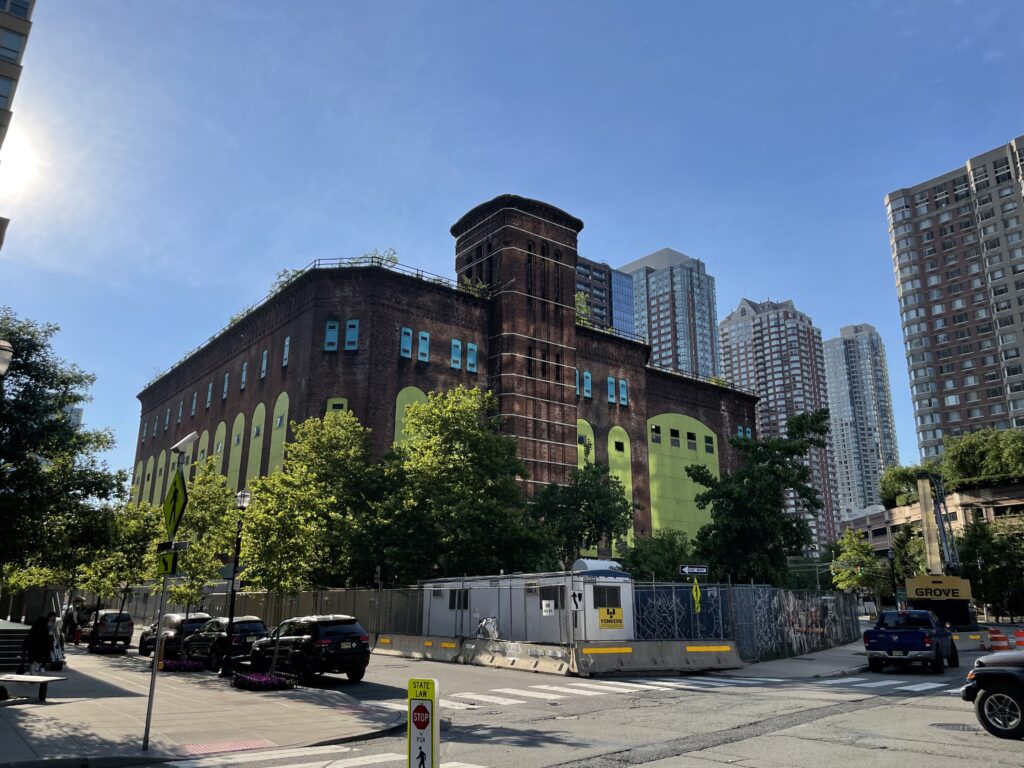
Then there is the Powerhouse itself, which still sits vacant in the middle of the neighborhood. Jersey City officially acquired the hulking structure in 2018 and the Port Authority of New York and New Jersey has begun construction on a long-needed new substation.
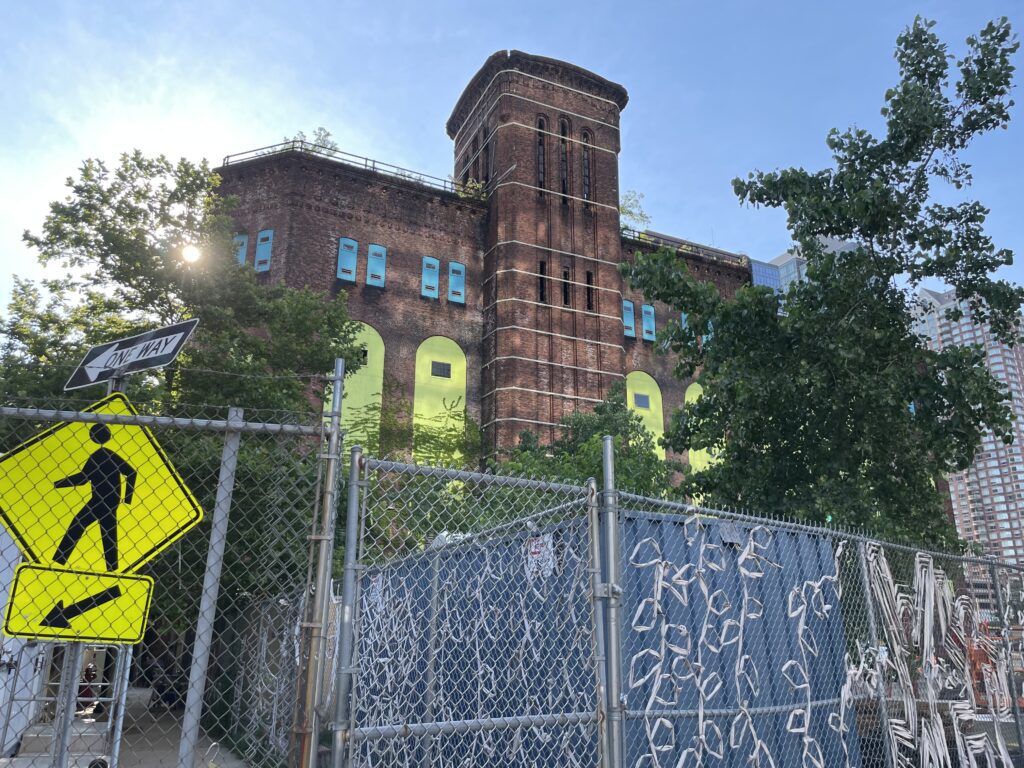
Despite the progress, officials have acknowledged that the Powerhouse might not be salvageable for future use, as weather conditions and decay have taken hold at the century-old building.
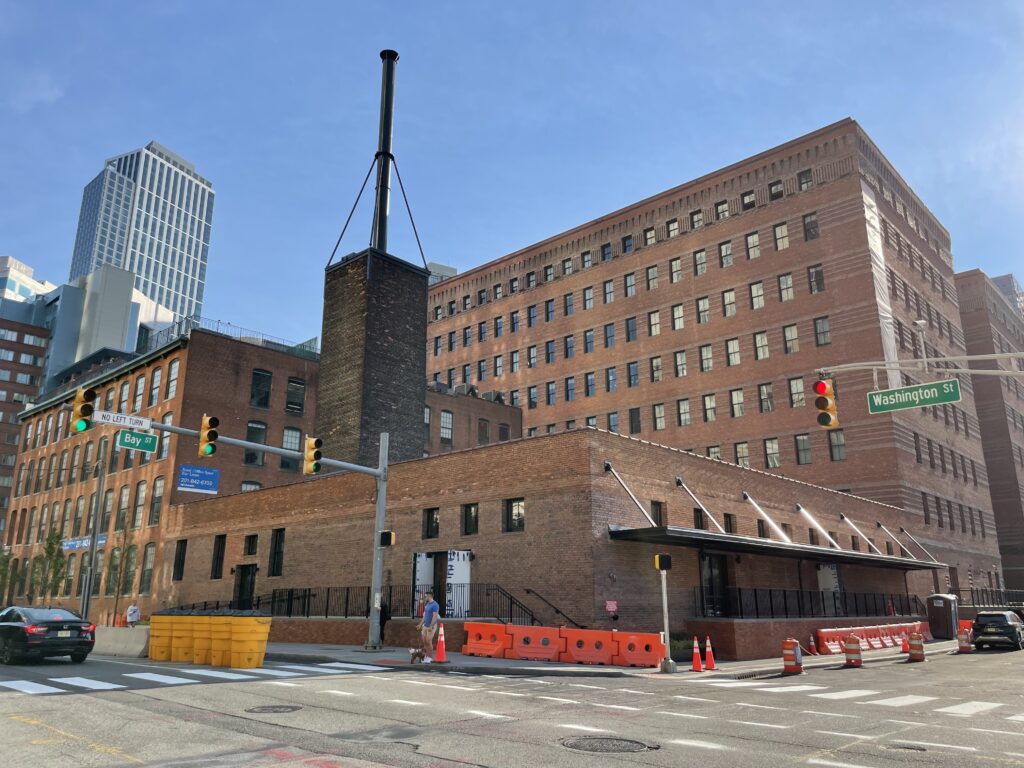
There is better preservation news across the street, as Jersey City’s $2 million Washington Creative Center is creating a new workspace and rehearsal venue for local nonprofits inside a historic structure that is slated to open later this year.

